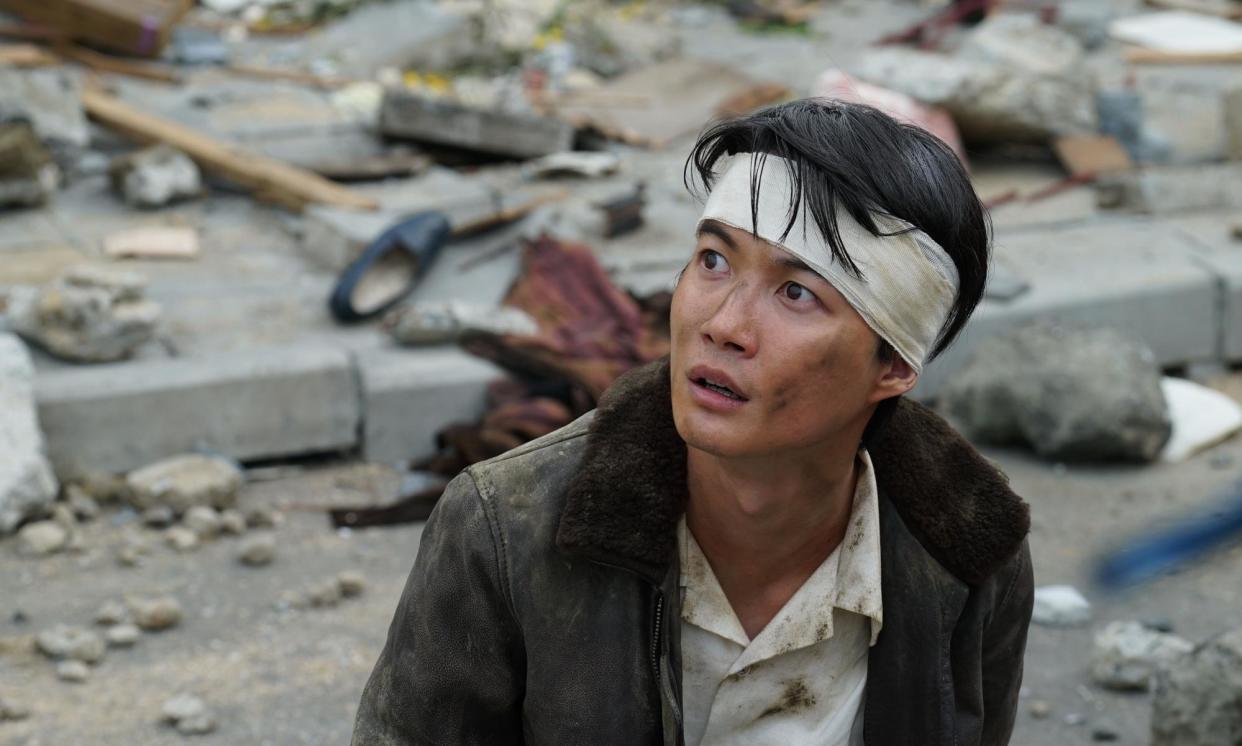Godzilla Minus One review – rageful monster is one of the best in the series

There are bazillions of Godzilla films out there, both from Japan and the US and this latest contribution to the franchise is one of the very best. It’s up there with the original 1954 film, the clever reboot from a few years ago Shin Godzilla, and my personal favourite, Godzilla vs the Smog Monster, AKA Godzilla vs Hedorah (1972), which rocks because it has extras in white gogo boots, head-trip sequences and, in the English dubbed version, a kicker of a theme song called Save the Earth.
However, like the other two aforementioned great Godzilla films, this one works because it puts the trauma of history at the very centre of the story, ultimately crafting a story about human beings pulling together to heal and defeat an inexplicable force of destruction. Minus One starts in the very last days of the second world war, a uniquely bleak moment in Japanese history. Protagonist Shikishima (Ryunosuke Kamiki) is supposed to fly a kamikaze mission but, overcome by fear and an understandable desire to live, he lands on Odo island (a deep cut from Godzilla lore) to fix a made-up engine failure.
Godzilla, a monster familiar to the locals, attacks and kills nearly everyone on the island, and once again fear stops Shikishima from fighting back. Shikishima returns to a Tokyo burned and smashed to smithereens by the Allied firebombing to find his parents dead, his home a pile of matchsticks. Nevertheless, he builds a makeshift family of sorts with a young woman called Noriko (Minami Hamabe) who also lost everything, and a baby Akiko (adorably played by Sae Nagatani later as a three-year-old), whom Noriko was charged with looking after when she saw Akiko’s mother die in a bomb shelter. Years pass and this little nuclear family looks poised to benefit from the postwar phoenix-like recovery of the nation. But there are other kinds of nuclear force at play here, especially in the Bikini Atoll where the H-bomb is tested.
In the original Godzilla movie, the big bad horror was the destruction of Hiroshima and Nagasaki by Oppenheimer and co’s A-bomb, along with anxieties about the nuclear testing in the Pacific, cited in the film as a contributing factor to Godzilla’s genetic mutation. In the contemporary-set Shin Godzilla, the fault lies with institutions and international relations, but an efficient marshalling of those same apparatuses is instrumental, along with a knowledge of origami, to defeat Godzilla. Either way, in all three the saviour is most certainly not some deus ex monstera like King Kong or similar – a move particularly favoured by the American Godzilla films.
Instead, in Godzilla Minus One, the most effective means to counteract Godzilla involves private citizens (tellingly, not the government) pulling together voluntarily to pool knowledge and form an effective chain of command to science the crap out of stopping him. For long stretches Shikishima and Noriko practically disappear into the background, apart from one especially wrenching moment when they’re caught up in the big-footed lizard’s destruction of Ginza. Director Takashi Yamazaki masterfully tightens and loosens the emotional screws throughout, abetted by a stunning, throbbing minimalist score by Naoki Satô. Yamazaki also knows how to play with scale, moving between the intimacy of the little family and their fragile lives and the almost incomprehensible scale of the monster, capable of swishing away whole city blocks with a flick of his tail.
This is not a cuddly version of Godzilla. He is rageful and entirely incomprehensible, seemingly not even motivated by hunger, desire or revenge. Like a god, he just is, an entity that has become death, the destroyer of worlds, as ineluctable as history itself.
• Godzilla Minus One is released on 15 December in UK and Irish cinemas.

 Yahoo Movies
Yahoo Movies 
